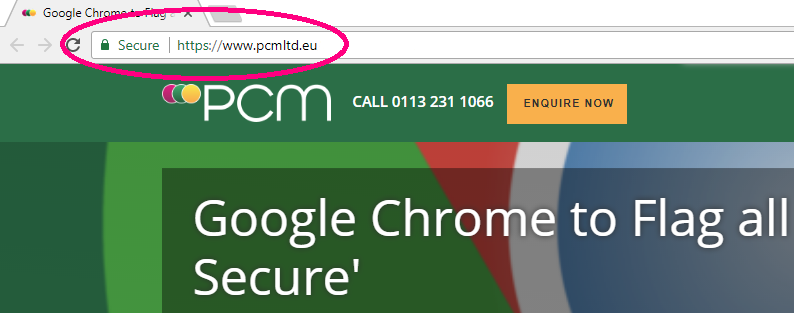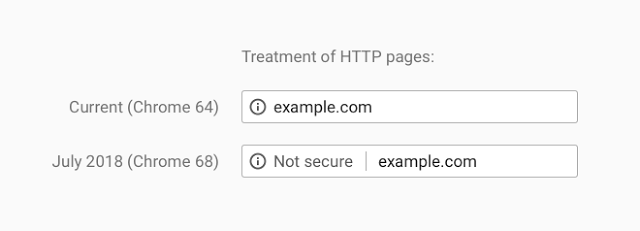
What is HTTP and HTTPS?
HTTP stands for HyperText Transfer Protocol and HTTPS means HyperText Transfer Protocol Secure. They are languages used to transfer data between web servers and clients. Without the S, what happens between your computer (or mobile) and the website you're visiting can potentially be seen by unauthorised parties. With HTTPS, data including passwords, credit card details and other sensitive information is encrypted, but it isn’t with HTTP. You can see if a website is using HTTP or HTTPS in the address bar in your browser.

So what is Google saying?
Google has been encouraging businesses to update their website to HTTPS for a long time. Now the search giant has given businesses a deadline to make the switch from HTTP to HTTPS.
Google has announced that Chrome 68, set to be released in July 2018, will mark ALL websites using HTTP as “Not Secure” in the address bar. Internet users will still be able to access and view websites using HTTP, but they will be shown the “Not Secure” message.
Who will this impact?
Approximately 50% of websites worldwide are only available on HTTP. These are the websites that will be affected by the Chrome 68 update. With Google Chrome used by 56% of the global population, website managers and business owners can’t afford to ignore this change.
Even recently some of the top 100 websites like bbc.co.uk were still using HTTP, although there have been some major recent updates from the BBC and the likes of Microsoft and Ebay to make their websites accessible on HTTPS.
The 50% of websites worldwide using the secure HTTPS protocol won’t be affected by this change in the Chrome 68 update.
What does this mean for website visitors?
The image below is taken from Google’s Online Security Blog, and shows what will appear in the address bar when a visitor lands on a website that uses HTTP.

Around 53% of the global population has access to the internet, that’s over 4 billion people (as of December 2017). And those billions of people are becoming more savvy when it comes to using the internet, especially following massive public data breaches in the past 2 years.
Their trust will be lost and they are unlikely to stay on a website that is flagged as “Not Secure”. They’re extremely unlikely to make a purchase on a website using HTTP going forwards.
This is not just a result of the Chrome update. Several payment gateways also flag HTTP websites as unsafe no matter what browser you’re using.
Why else make the change?
This Chrome 68 update shouldn’t be the only reason why you update your website to use the HTTPS protocol. HTTPS has benefits that affect visitors experience, enjoyment and conversions on a website. These tips apply for all websites currently running HTTP, and the browser is irrelevant.
Better SEO rankings
Google has confirmed that websites using HTTPS over HTTP are likely to place better in search results pages (SERPs). Of course there are other factors to consider, but research has shown a positive impact on search rankings once HTTPS has been deployed.
New Data Protection Laws
With new data protection regulations coming into law in May 2018, there are more rules around how businesses protect data during their business processes. “Privacy By Design” means that your processes should be designed to reduce the risk of data leaks and breaches. Updating to HTTPS and adding this into your data protection impact assessment will help to show that you take the security of your customers’ data seriously.
What Next?
Talk to our web team if you want to switch your website to HTTPS. You don’t need to redesign your website, but there are some back-end implementations that need to be carried out.
Call 0113 231 1066 or send us a message using the button below.
Date published: 19/02/2018